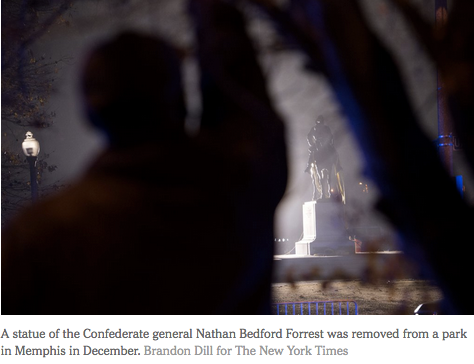The legendary Memphis newspaper editor Ida B. Wells was targeted for assassination — and driven into exile — for exposing the lies that were routinely used to justify hanging, dismembering and burning alive African-Americans in the Jim Crow South.
Whites were particularly outraged when Wells said in an incendiary editorial, “Nobody in this section of the country believes the old threadbare lie that Negro men rape white women” — implying that rape accusations that preceded lynchings arose from the discovery of consensual sex between black men and white women.
By the time Wells took refuge in the North in 1892, white Southerners had made racial terrorism a fact of life and embarked on a propaganda campaign that romanticized slavery, idealized the Confederate past and held that white supremacy would restore lost Southern greatness. The Confederate monuments that sprang up in public spaces across the South — and that still stand today — were an essential part of that campaign.
The Confederate generals Robert E. Lee and Stonewall Jackson were popular choices for veneration. But Wells’s beloved city of Memphis set its sights on Tennessee’s native son, the Civil War general and Ku Klux Klan founder Nathan Bedford Forrest. A monument of Forrest astride his horse towered over a public park in the city for more than a century until shortly before Christmas, when the city overcame state opposition to finally dismantle it.




